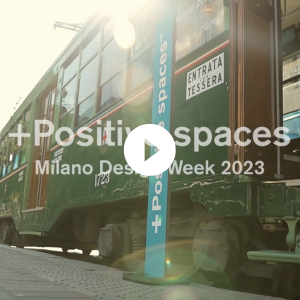We have met Carlo Ratti on the occasion of 21° Forum organized by Scenari Immobiliari, where he have made a captivating speech on the concept of Senseable City, that is the title of the laboratory he directs at MIT in Boston.
Carlo Ratti -who was named one of the “50 Most Influential Designers in America” by Fast Company and highlighted “50 People who will Change the World” in the Wired’s list- has kindly given us an interview, to investigate the link between Senseable City and future Workstyles and some new, possible workplaces produced by an Smart City, in a broader and more complex sense of the word, compared with a model just based on ICT infrastructures.
How is the 3rd Industrial revolution changing the idea of city?
To begin with, I think the city of tomorrow will not be so different from what we see today. However, because of the new forms of digital technologies, our lifestyle will be incredibly different. Nowadays, new technologies have been able to democratize knowledge, data, logistics, and marketing by increasing the accessibility of information to a wider range of population, as well as enabling a higher degree of participation from people, for instance through open source processes. The emerging field of smart (or rather Senseable, a more human sounding term) –smart city, smart citizen, smart planning- is poised to radically transform our lives as well as help to improve many aspects of our cities – from traffic to waste management, from energy to industrial production.
How are new technologies going to change the ways of working/living, and hence the very concept of workplace?
It’s about how technology can help us live in a different, more flexible way. Five or ten years ago we were chained to a desk or computer and couldn’t move. Today we can take the office with us. This is about how can we use this liberating power of technology to live or work in a better way. In another sense, the 3rd industrial revolution will made it possible to bring industry back to the city, albeit a new type of industry: lightweight, digital, clean.
The current office doesn’t seem to feel these changes. Do you think it’s going to disappear or just turn into something new?
The place of work today is already no longer just a physical shared location – it is a space where its users can exchange knowledge and ideas, share tools and infrastructure. The best way to foster innovation and creativity in the future is by clustering people of same interests and goals together.
You have carried out smart projects across the world, what are your experiences and the most interesting examples in Italy?
We are currently not working with municipalities in Italy. But we have been developing a number of innovative ideas on office buildings for Generali Real Estate – exploring some of the aspects we were discussing above…
Does your concept of Smart City take into account a new (anti-Le Corbusier) idea of urban-planning, based on interaction/integration of activities and spaces (open private space) where new trades can be fitted in. What are the hallmarks of such places?
I would not say anti-Corbu… However, it is true that the city of Le Corbusier – for instance the one that was outlined in the Charte d ‘Athene – was very segregated: an area for working, one for living and one for leisure. The concept today is the opposite: creating mixed spaces, looking increasingly for possibilities of hybridization. Thanks to new technologies we can now live more in the open air than ever imagined. For example, for the city of Guadalajara in Mexico we have been working on the masterplan for a large redevelopment project of an urban area based on the concept of the outdoor office – benefiting from Guadalajara’s year-round pleasant climate and the native courtyard architecture to create wonderful spaces to work in the open air!
The reutilization of courtyards based on new functions and outdoors working lifestyle (like ancient Greek Philosophers…) are attractive concepts; what kind of settings and furniture are you planning for these spaces?
Very good question! Over the past decades digital and networked technologies have impacted on most aspects of our lives: from the way we work to how we access knowledge, meet and get to know each other. This in turn is poised to have an impact on our furniture – a field where I believe that we will see many changes in the next few years… On our side we have started an exploration with Italian furniture producer Cassina: Our Universe. The project brings together seven prototypes that explore this question, across three main axes: the evolution of production processes thanks to the development of new technologies; the changing habits due to the ability to interact with our devices; the physical integration of technology with furniture design to provide new functions and services.
Interview by Renata Sias, editor WOW! Webmagazine.
Captions
1 Ciudad Creativa Digital (CCD) is an exciting new project to enhance not only urban life, but also the identity of Guadalajara and Mexico in the growing digital media industry. Located in Guadalajara, the country’s second largest city and the home to Mexico’s ‘Silicon Valley’, CCD will draw on the strengths of the site – its talent, historic fabric and connections – while pushing the boundaries of sustainable urban development. Courtyards are the organizing principle of CCD, integrating living, working and leisure in a human-scaled urban environment that can be changed, added to, and adapted over time. Responding to the challenges of the digital revolution, the Master Plan includes a number of ways in which the digital realm will make CCD a unique place to live and work, attracting Mexican and overseas creative minds to develop new digital media content.
A project for Guadalajara CCD A.C. on behalf of the Secretaría de Economía, ProMéxico, SHF, Gobernio de Jalisco, Canieti and the City of Guadalajara; developed by Carlo Ratti Associati, together with Prof. Dennis Frenchman, Accenture, Arup, Engram Studio, Fundación Metrópoli, Mobility in Chain, MIT Senseable City Lab and Studio FM milano.
2 Digital Water Pavilion (DWP) designed for the Zaragoza Expo 2008. The challenge was to use water – the theme of the Expo – as an architectural element. The walls are composed of digitally controlled water droplets, which can generate writing, patterns or access spaces. The result is a space that is interactive and reconfigurable; each wall can potentially become an entrance or exit, while the internal partitions can shift depending on the number of people present. The only material elements are the two boxes and the roof, which is a sort of curtain that can move vertically and flatten to the ground removing the presence of the pavilion entirely. The Digital Water Pavilion was TIME Magazine as ‘Best Project of the Year’ in 2008.
A project by Carlo Ratti Associati with Claudio Bonicco, Matteo Lai, MIT Media Lab / Smart Cities Group – William J. Mitchell, MIT Department of Urban Studies and Planning – Dennis Frenchman, MIT SENSEable City Lab, ARUP, Agence Ter, Studio FM Milano, Typsa, Lumiartecnia International and Siemens | Photos by Claudio Bonicco, Ramak Fazel, Max Tomasinelli, Walter Nicolino.
3 Makr Shakr is a robotic barman, able to prepare a large number of drink combinations based on crowd input. People will be able to design their own drinks, using all possible cocktail ingredients, through an app on their handheld devices. Following robotic production, they can enjoy the drinks they made for themselves or for others and share their reactions on the social network. The digital design system can also monitor the individual’s alcohol consumption and blood alcohol levels, hence promoting responsible drinking. Makr Shakr aims to show the “Third Industrial Revolution” paradigm through the simple process make-produce-enjoy, and in just the time needed to prepare a new cocktail. The project was previewed during Milan Design Week before being unveiled at Google I/O 2013.
Project concept and design by MIT Senseable City Lab; Implementation by Carlo Ratti Associati; Main partners – Coca-Cola and Barcardi. Technical partners – Kuka, Pentagram, SuperUber; Media partners – Domus, Wired; Event in collaboration with Meet the Media Guru, and endorsed by: Comune di Milano, World Expo Milano 2015 – Energy for Life. Feeding the Planet.
















